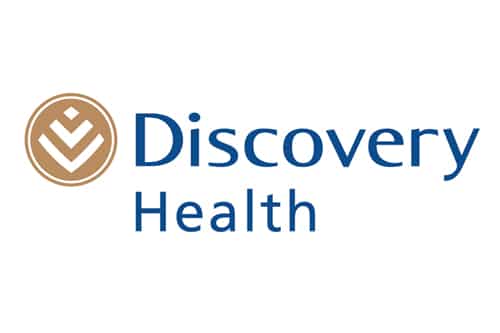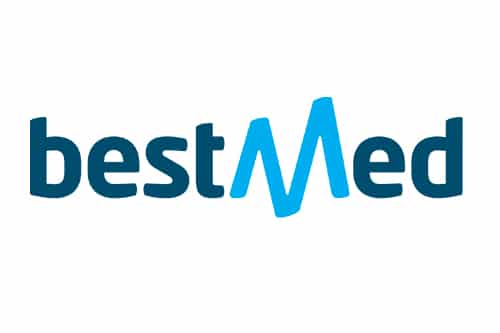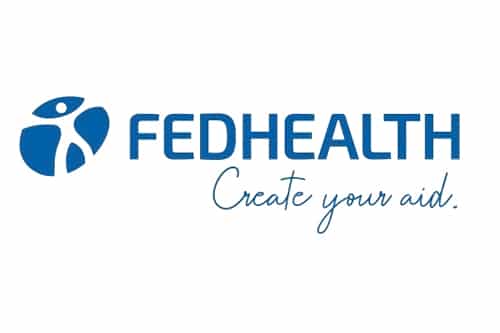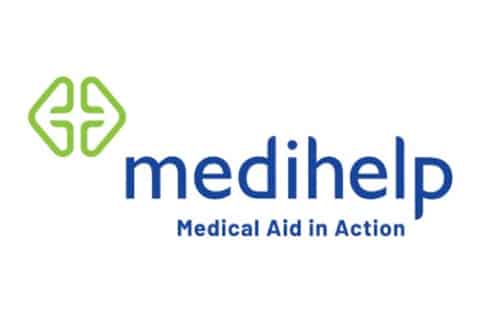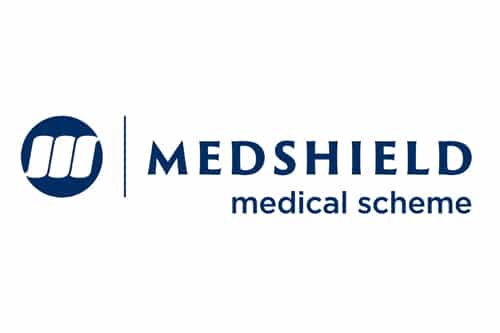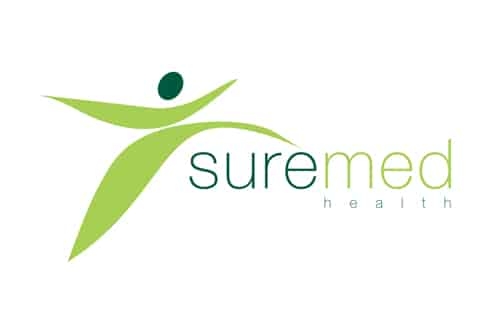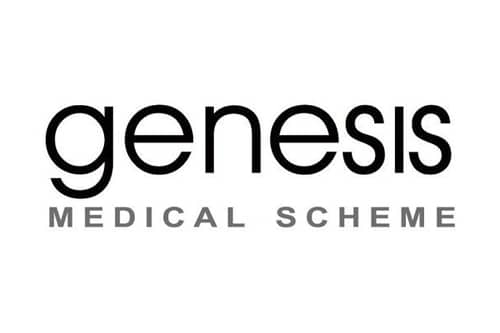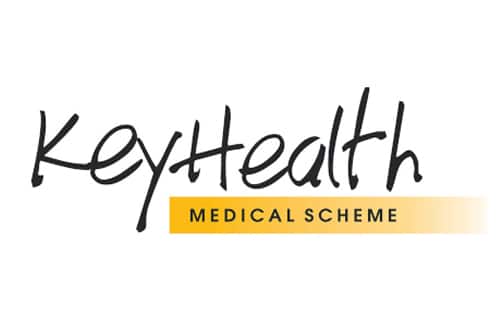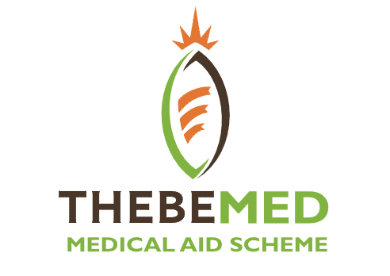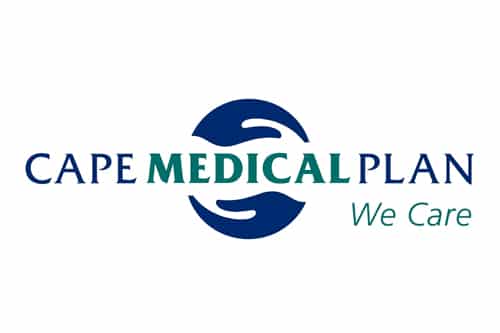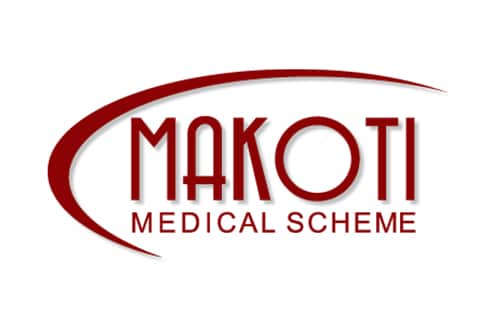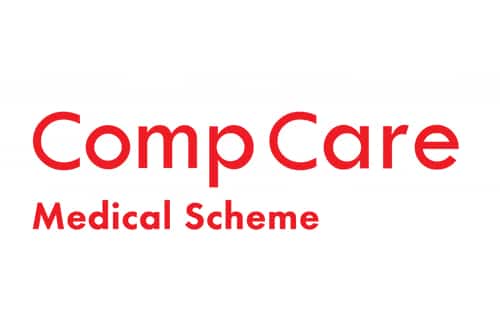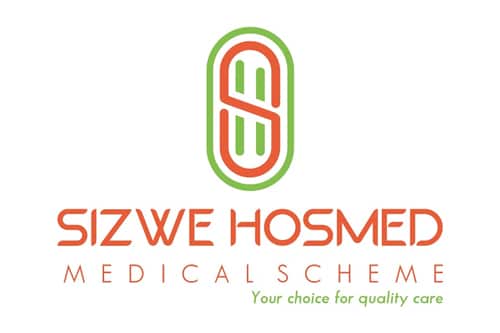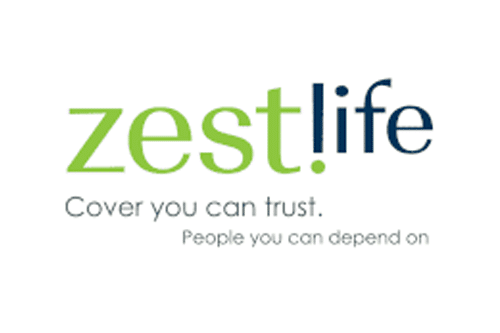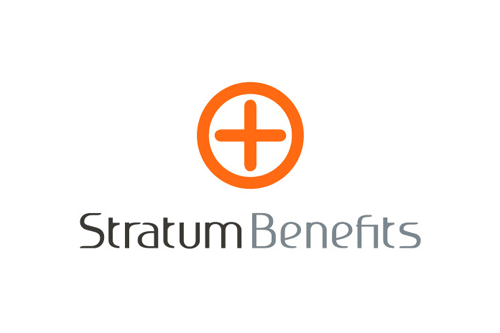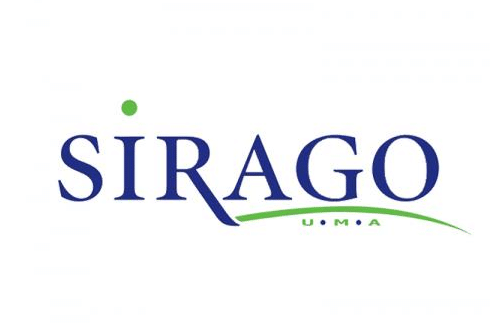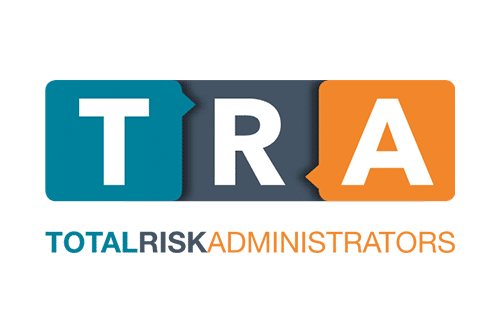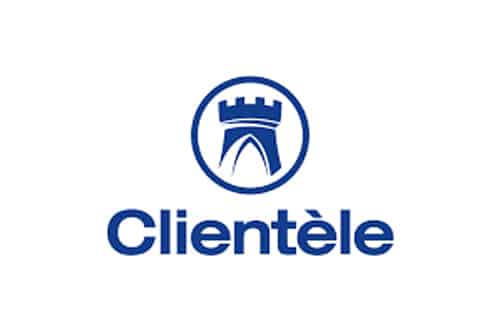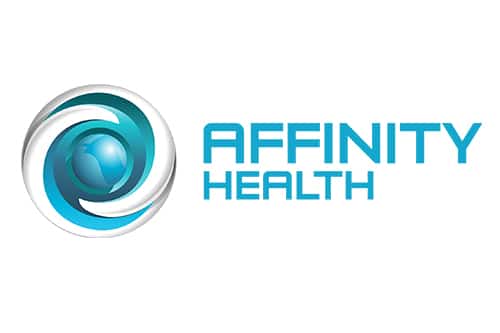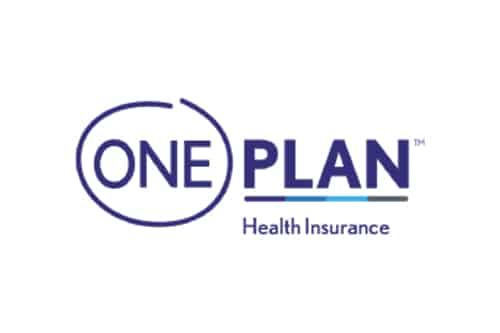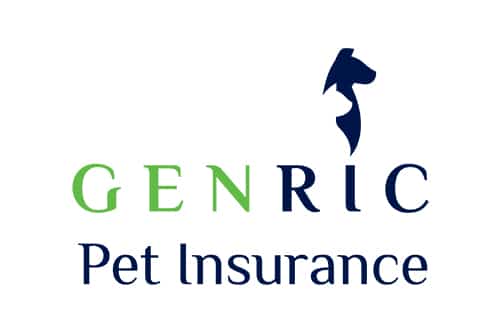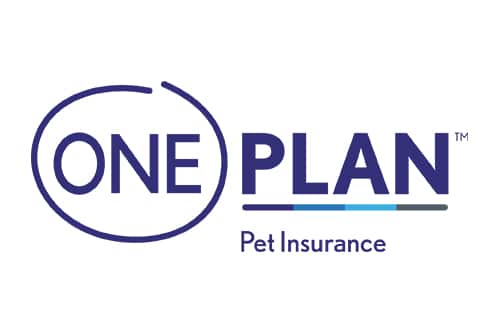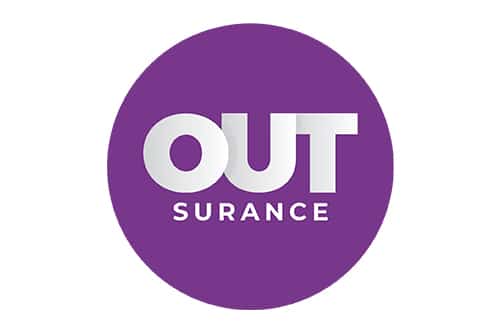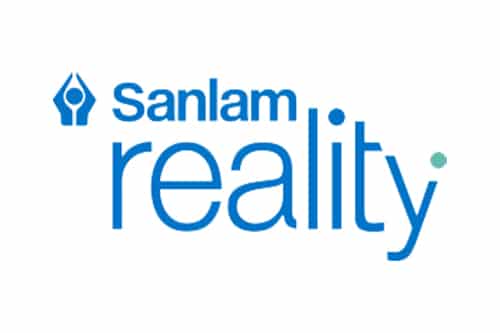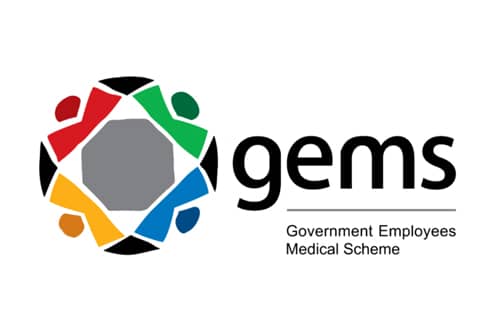
Medical Aid Schemes that Cover Deep Vein Thrombosis
This article discusses Deep Vein Thrombosis, a critical subject characterised by the formation of blood clots in the deep vessels of the body, and its consequences in the context of South Africa. We shall investigate this ailment’s symptoms, treatments, and prevalence within the nation.
Moreover, this analysis will centre on the Medical Aid Schemes in South Africa that provide coverage for deep vein thrombosis (DVT), demonstrating the criticality of such coverage within the country’s healthcare infrastructure. In this article you will learn:
- The Best Medical Aid Schemes that Cover Deep Vein Thrombosis in South Africa (2024) – a List
- Does Discovery Health cover Deep Vein Thrombosis treatment?
- Is Deep Vein Thrombosis (DVT) a Prescribed Minimum Benefit (PMB)?
- Is Deep Vein Thrombosis covered under critical illness insurance?
- The Top Medical aids covering Pre-Existing conditions in Deep Vein Thrombosis Conditions
- The Best Medical Aid Schemes for Adults and Pensioners covering Deep Vein Thrombosis
- What is a treatment plan for DVT?
- Can DVT be cured?
- What are the symptoms of Deep Vein Thrombosis?
and Much, Much more !
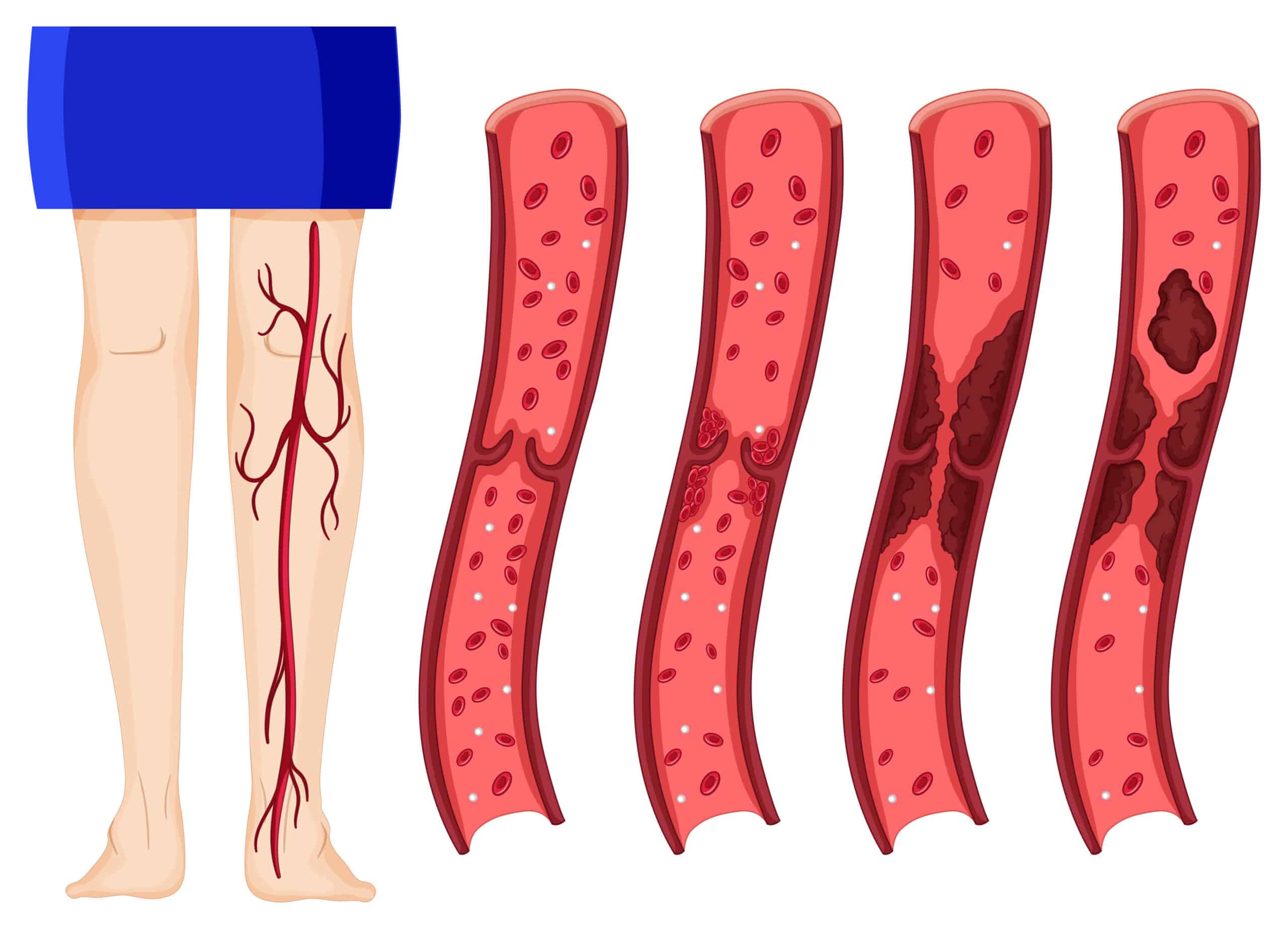
Medical Aid Schemes Covering Deep Vein Thrombosis – A Comparison
| 🔎 Provider | ↪️ Cover Deep Vein Thrombosis | ➡️ Top Plan for Deep Vein Thrombosis |
| 🥈 Bestmed | ✅ Yes | Pace 3 |
| 🥉 Bonitas | ✅ Yes | BonStart Plus |
| 🏅 Cape Medical Plan | ✅ Yes | HealthPact Select |
| 🎖️ CompCare | ✅ Yes | PINNACLE |
| 🏆 Discovery Health | ✅ Yes | Discovery Health KeyCare Core |
| 🥇 Genesis | ✅ Yes | MED-200 Plus |
| 🥈 Sizwe Hosmed | ✅ Yes | Value |
| 🥇 Fedhealth | ✅ Yes | Maxima PLUS |
| 🥉 KeyHealth | ✅ Yes | Equilibrium |
| 🏅 Makoti Medical | ✅ Yes | Comprehensive Option |
| 🎖️ MediHelp | ✅ Yes | MedVital Elect |
| 🏆 MediMed | ✅ Yes | Medisave Essential |
| 🥇 MedShield | ✅ Yes | PremiumPlus |
| 🥈 Momentum Health | ✅ Yes | Evolve |
| 🥉 Suremed | ✅ Yes | Shuttle |
| 🏅 Thebemed | ✅ Yes | Universal EDO |
Medical Aid Plans Covering Deep Vein Thrombosis (2024)
- ☑️ Bestmed – Members might be covered for DVT under hospitalisation
- ☑️ Bonitas – Cover Deep Vein Thrombosis under its Hospital-at-Home benefit and program
- ☑️ Cape Medical Plan – Distinctive emphasis on preventive care and therapies
- ☑️ CompCare – Concentrating on holistic care for people with Deep Vein Thrombosis (DVT)
- ☑️ Discovery Health –Might cover hospitalisation, procedures and certain treatments for DVT.
- ☑️ FedHealth – Has two plans that cover Deep Vein Thrombosis (DVT)
- ☑️ Genesis – Patients with DVT access to necessary treatments and medications under hospitalization
- ☑️ Sizwe Hosmed – Trusted South African-Based Medical Aid
- ☑️ KeyHealth – Covers Deep Vein Thrombosis according to its hospital-at-home program
- ☑️ Makoti Medical – Might treat patients with Deep Vein Thrombosis (DVT) under hospitalisation
- ☑️ MediHelp – Flexible Healthcare Solutions
- ☑️ MediMed – Places accessibility as a top priority in its DVT while in hospital
- ☑️ MedShield – Broad support networks and all-inclusive medication coverage
- ☑️ Momentum Health – Plans have been established to deliver broadened treatment options
- ☑️ Suremed – Offer easily available healthcare resolutions
- ☑️ Thebemed –Might cover Deep Vein Thrombosis in terms of hospitalisation benefits
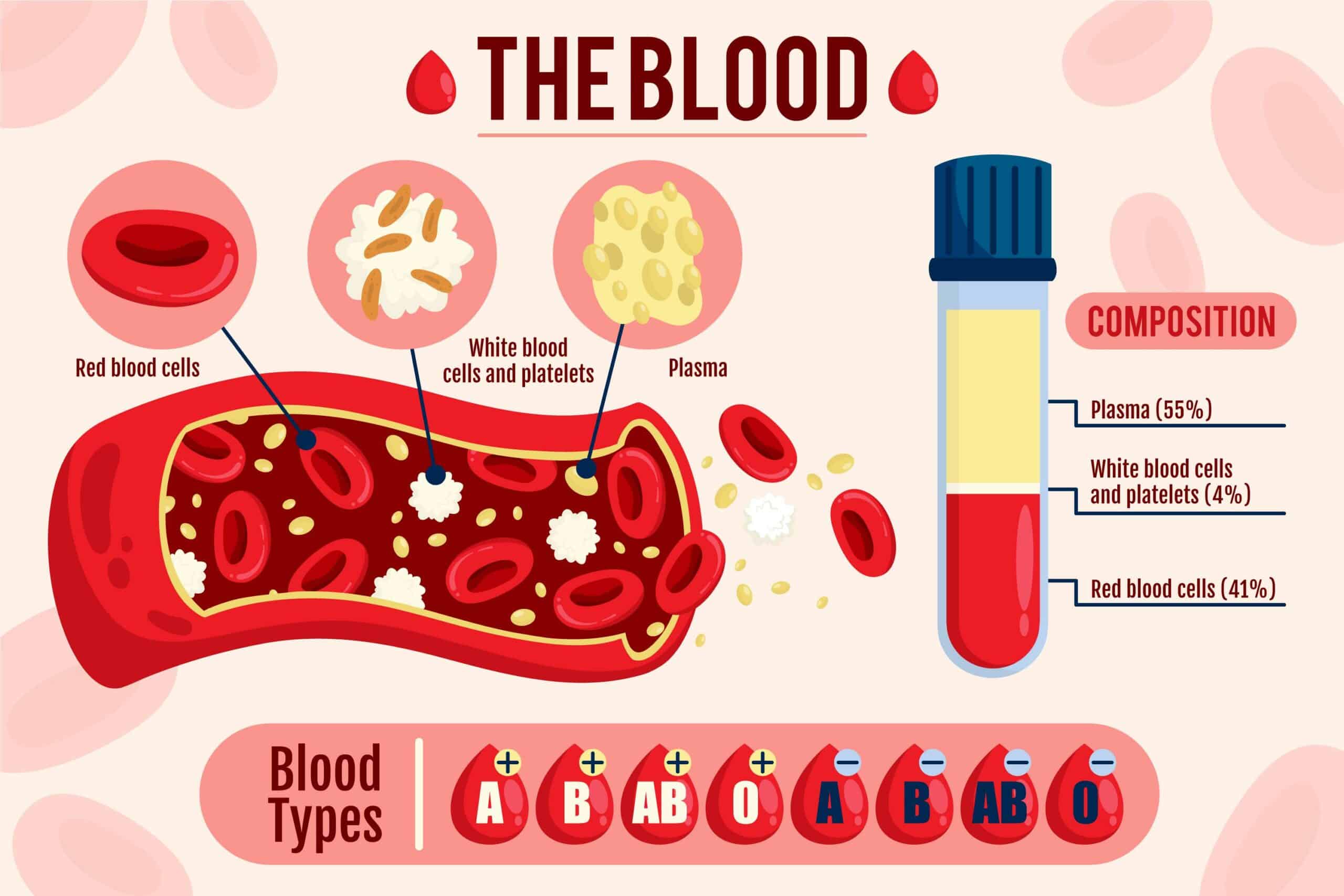
What is Deep Vein Thrombosis?
The formation of blood clots in the body’s deep veins, primarily in the legs, is a medical condition known as Deep Vein Thrombosis (DVT). This abnormality can cause swelling, discomfort and redness in the affected limb by disrupting normal blood flow.
The most significant danger posed by DVT is that these clots may detach from their origin point and travel through circulation to reach the lungs, resulting in pulmonary embolism, which has potentially life-threatening consequences.
Overview of Deep Vein Thrombosis
Blood thickens and clumps in the deep veins of the lower legs, thighs, or pelvis, causing DVT.
Deep Vein Thrombosis is caused by several causes, including prolonged periods of immobility (such as long flights or bed rest), certain medical problems (such as cancer or heart disease), hereditary predisposition, smoking, obesity, and ageing.
DVT symptoms, such as oedema, discomfort, and a warm sensation in the afflicted area, are important signs. However, DVT might be asymptomatic in some circumstances, making it difficult to diagnose without a good medical evaluation.
Deep Vein Thrombosis Stats in South Africa
According to statistics, the annual incidence of deep vein thrombosis (DVT) in South Africa surpasses 200,000 people. However, due to the hidden nature of DVT, the precise frequency remains unknown. The thromboembolic illness kills approximately 20,000 people in South Africa each year.
DVT occurred in 2.4% to 9.6% of postoperative patients, while it affected between 380 and 448 per 100,000 births in Africa each year. In South Africa, a considerable number of patients diagnosed with venous thromboembolism (VTE) (59%) were HIV-positive, and there is an aetiological relationship between VTE and tuberculosis (TB).
According to research conducted at Charlotte Maxeke Johannesburg Academic Hospital’s quaternary care facility, HIV and tuberculosis were shown to be widespread at 53.0% and 21.2%, respectively.
Can Deep Vein Thrombosis be cured, and how?
Although it can be dangerous, DVT is a condition that can be effectively treated. The primary objective of treatment is to prevent clot development and reduce the chances of pulmonary embolism resulting from its breakage.
Anticoagulant medications are commonly used in these treatments that thin blood by preventing clots from developing further; they do not dissolve already existing clots but help decrease their expansion risk while minimising new ones’ potential formation.
In some rare cases where anticoagulants prove ineffective or cannot be applied, alternative measures such as thrombolytic therapy (a process for dissolving problematic clots) or surgical operation may become necessary options for resolution purposes instead.
Deep Vein Thrombosis Curability and Management
Effective Deep Vein Thrombosis management is critical for lowering the risk of complications. While medicine and lifestyle modifications can help control the illness, it is crucial to remember that DVT might reoccur, especially if the underlying risk factors are not addressed.
Long-term management may involve using anticoagulants regularly, using compression stockings to reduce swelling, and adopting lifestyle changes such as frequent exercise, maintaining a healthy weight, and avoiding lengthy periods of immobility.
Regular check-ins with a healthcare practitioner are required to monitor the condition and alter treatment. Individuals with DVT can live active and productive lives while reducing the risk of significant consequences with proper care.
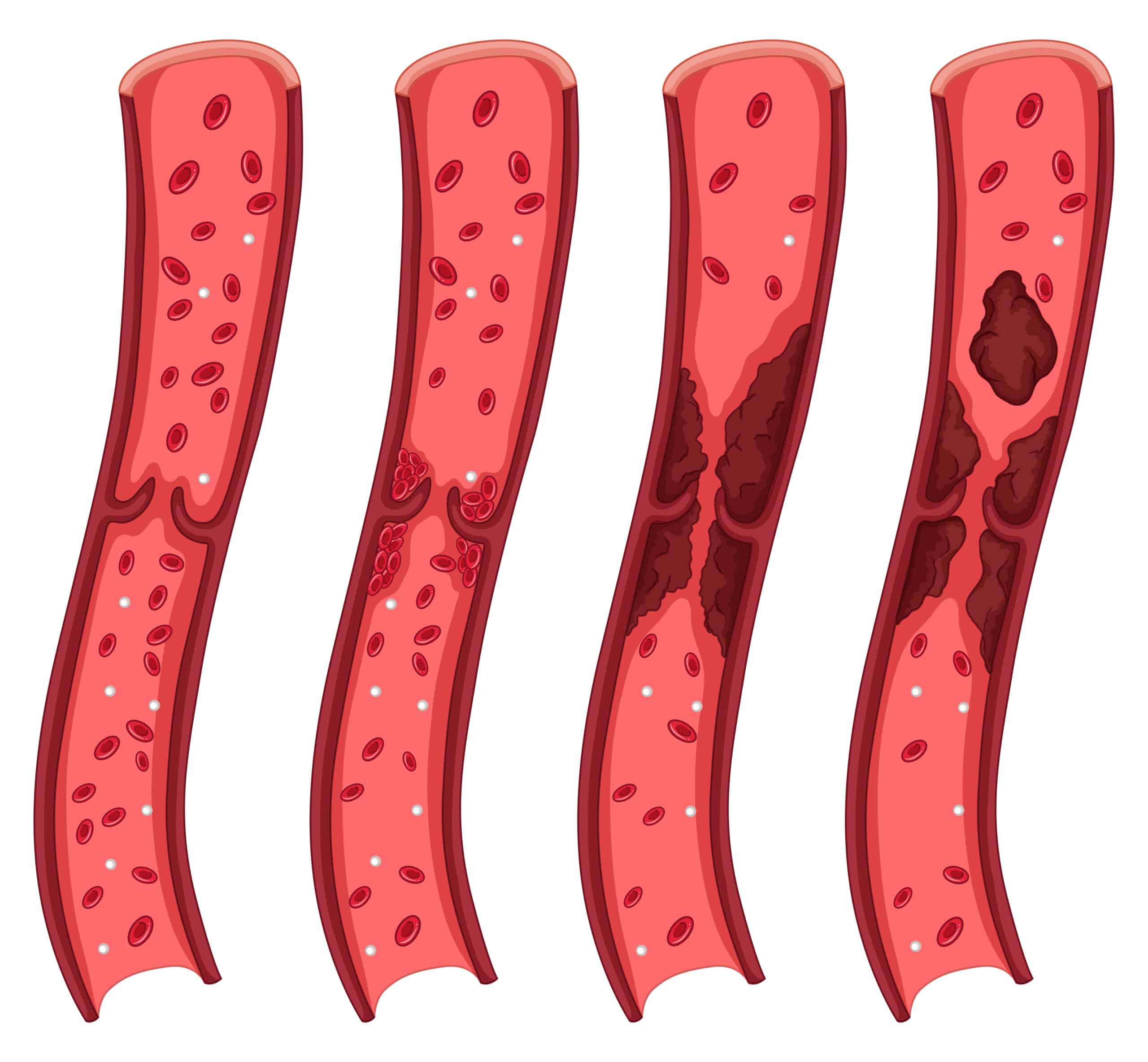
Deep Vein Thrombosis Symptoms
Deep Vein Thrombosis (DVT) causes a variety of symptoms that vary in severity. Recognising these signs is critical, especially in places like South Africa, where access to healthcare varies by community.
Furthermore, early detection and treatment can minimise the risk of complications such as pulmonary embolism. The following are some of the common symptoms of Deep Vein Thrombosis:’
- ✅ Warmth in the Area of the Clot
- ✅ Leg Fatigue
- ✅ Pain or Tenderness in the Leg
- ✅ Swelling in the Affected Limb
- ✅ Red or Discolored Skin on the Leg
Warmth in the Area of the Clot
The skin around the blood clot may feel warmer than the skin around it. Inflammation and increased blood flow to the area generate this warmth.
However, it can be difficult to discern this warmth from environmental influences in warmer climates, such as many portions of South Africa. Therefore, isolated warmth should be regarded seriously if it is localised and accompanied by other symptoms such as swelling or pain.
Leg Fatigue
Deep Vein Thrombosis (DVT) symptoms include general weariness or heaviness in the leg, particularly after strenuous activity. This could be misinterpreted as normal exertion in a physically active population.
South Africans, particularly those who perform physically demanding jobs, should be aware that leg weariness when paired with other symptoms, necessitates medical treatment to rule out DVT.
Pain or Tenderness in the Leg
DVT can cause aching or discomfort in the leg, typically starting from the calf. The intensity of this sensation might heighten when standing or moving around.
In South Africa, individuals who engage in physical activities like walking and manual labour must not overlook such pain as tiredness or muscle strain. Neglecting to seek treatment for DVT-related agony may lead to persistent distress that could aggravate eventually.
Swelling in the Affected Limb
Swelling, most typically in one leg, is a common DVT sign. It can range from mild to severe and usually worsens over time.
Awareness of such symptoms is critical in South Africa, where lifestyle and environmental variables such as prolonged sitting during long journeys or sedentary work situations are prominent. In addition, swelling may be more noticeable after prolonged standing or sitting, and it may be accompanied by a sensation of heaviness in the leg.
Red or Discolored Skin on the Leg
Deep Vein Thrombosis (DVT) can be identified by redness or a notable change in skin colour on the leg, particularly on the back of the leg below the knee.
This symptom is frequently missed, particularly among South Africans with darker skin tones. Healthcare practitioners and patients must recognise small changes in skin colour as an indicator of underlying disorders such as DVT.
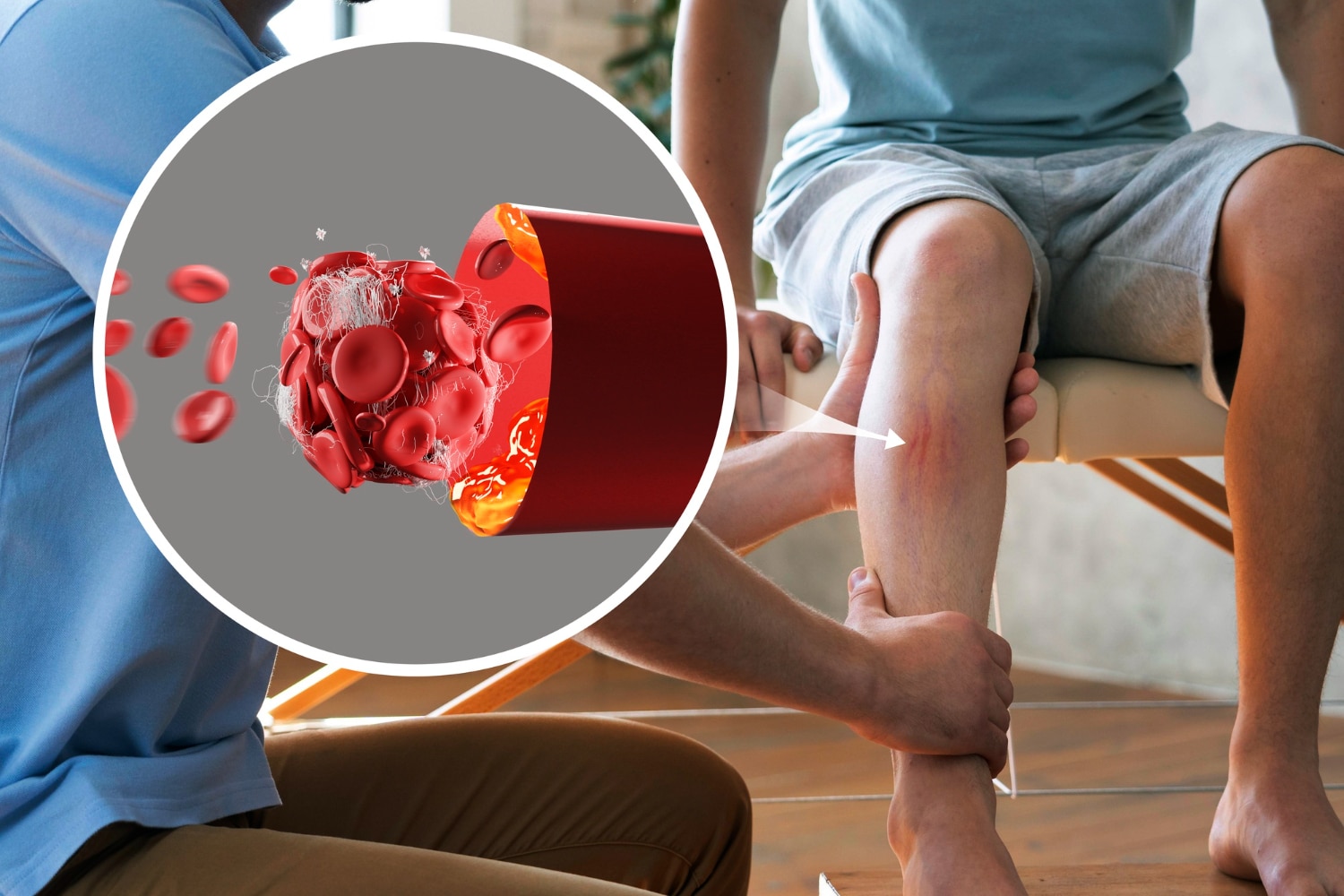
Deep Vein Thrombosis Treatment
Deep Vein Thrombosis (DVT) treatment is critical for avoiding complications such as pulmonary embolism. Understanding and utilising available treatment options is critical for controlling DVT in South Africa. Deep Vein Thrombosis can be treated in the following ways:
- ✅ Anticoagulant Medications
- ✅ Lifestyle Modifications
- ✅ Surgical Interventions
- ✅ Thrombolytic Therapy
- ✅ Compression Stockings
Anticoagulant Medications
The primary treatment for Deep Vein Thrombosis is anticoagulants, often known as blood thinners. These drugs reduce the ability of the blood to clot, preventing existing clots from getting larger and new clots from developing.
Ensuring regular supply and correct administration of these medications is critical in South Africa. Patients must follow the prescribed regimen, and healthcare practitioners must watch for adverse effects, especially in rural regions where follow-up visits may be less frequent.
Lifestyle Modifications
Lifestyle adjustments are important in the treatment and prevention of Deep Vein Thrombosis. Staying active, maintaining a healthy weight, and avoiding prolonged spells of immobility are all part of this.
Community-based programs and education about lifestyle changes can benefit South Africans, where there may be cultural and socioeconomic hurdles to regular exercise and healthy food.
In addition, encouraging regular activity, even as simple as walking or leg exercises, can be especially useful in communities with prevalent sedentary habits.
Surgical Interventions
Surgical measures may be required in severe cases of Deep Vein Thrombosis (DVT). Procedures may be included to remove the clot or filter the inferior vena cava to prevent clots from travelling to the lungs.
Given some disparities in surgical expertise and facility availability across South Africa in certain provinces, a referral system for patients in need of such procedures is critical.
Ensuring that patients have access to appropriate surgical care, particularly in distant or underserved locations, is critical to the country’s overall DVT management.
Thrombolytic Therapy
Thrombolytic therapy is the use of medications to dissolve blood clots. This is usually reserved for severe cases of Deep Vein Thrombosis (DVT) or when there is a high risk of consequences.
Identifying patients requiring this sophisticated care and facilitating access to specialised medical centres is critical in South African healthcare because such treatments may not be readily available in all places.
This medication necessitates close monitoring for potential bleeding problems, highlighting the importance of well-equipped healthcare facilities.
Compression Stockings
The main purpose of compression stockings is to exert pressure on the lower legs, which aids in promoting blood circulation and minimises swelling or discomfort.
As an available and non-intrusive alternative for managing DVT symptoms in South Africa that usually favours conventional therapies and physical rehabilitation methods, these socks prove especially helpful for individuals with restricted accessibility to advanced medical treatments or those recuperating from DVT.
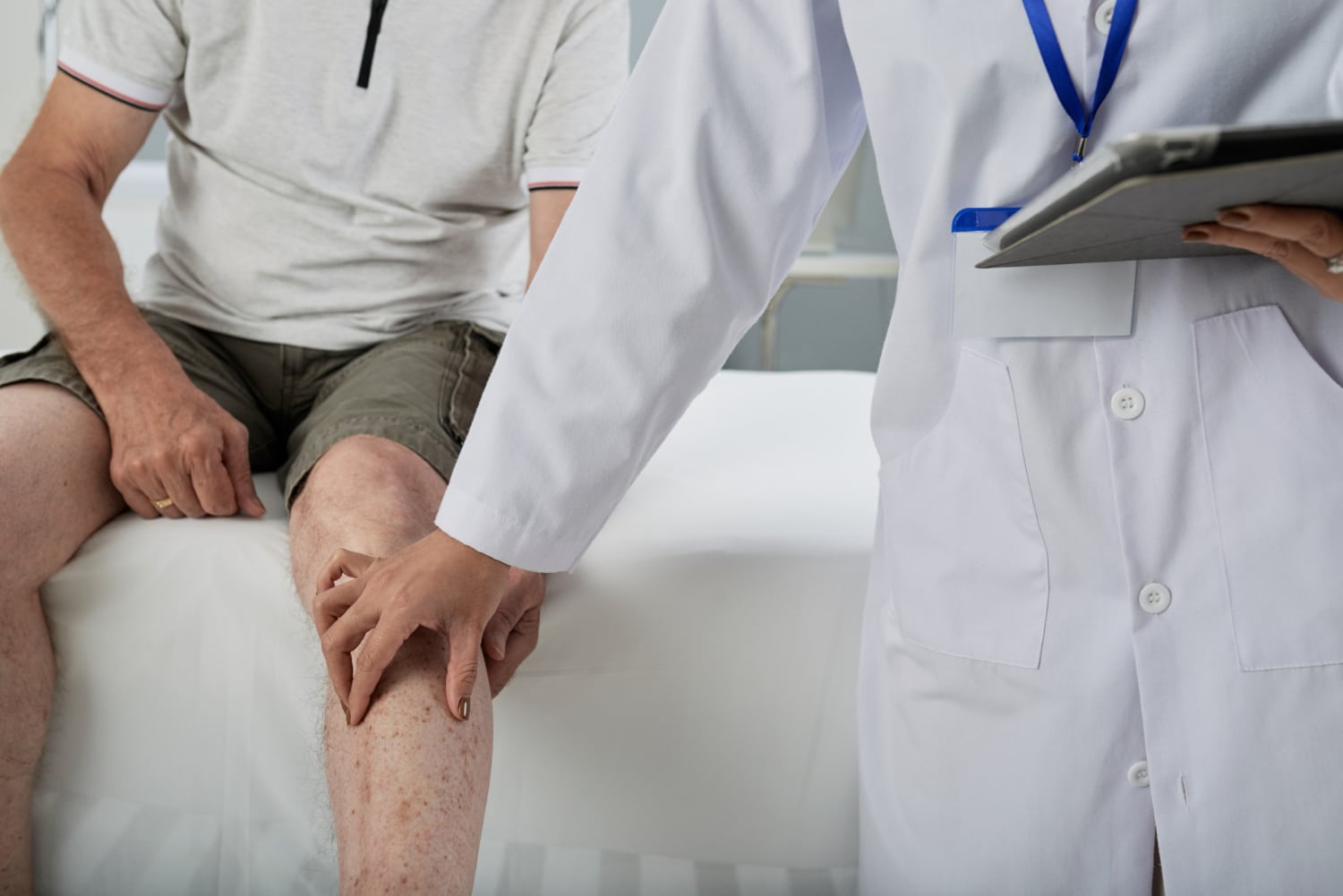
Medical Aid Schemes that Include Benefits for Deep Vein Thrombosis
Bestmed
Bestmed is dedicated to offering comprehensive healthcare solutions and boasts many healthcare plans and chronic disease support services.
Within the Prescribed Minimum Benefits (PMB) framework, their policies are carefully structured to assist members facing chronic health conditions, guaranteeing them access to vital medications and essential therapies.
Does Bestmed cover Deep Vein Thrombosis?
No, Bestmed does not directly cover DVT as part of its CDL or non-CDL lists. However, members might still be covered for hospitalisation, subject to terms, conditions, restrictions, and exclusions. In addition, Bestmed covers Pulmonary Embolism as a PMB.
Bestmed Plans that Cover Deep Vein Thrombosis
The following Bestmed Medical Aid Plans provide benefits and cover for Deep Vein Thrombosis:
- ✅ Beat 1
- ✅ Beat 2
- ✅ Beat 3
- ✅ Beat 4
- ✅ Pace 1
- ✅ Pace 2
- ✅ Pace 3
- ✅ Pace 4
- ✅ Rhythm 1
- ✅ Rhythm 2

Bonitas
Bonitas Medical Fund provides all-inclusive healthcare coverage in line with PMB regulations, encompassing chronic illness management.
Their plans cater to various healthcare needs and offer vital support and treatment for conditions like DVT while keeping affordability and accessibility as focal points.
Does Bonitas cover Deep Vein Thrombosis?
Yes, Bonitas might cover Deep Vein Thrombosis under its Hospital-at-Home benefit and program.
Bonitas Plans that Cover Deep Vein Thrombosis
The following Bonitas Medical Aid Plans provide benefits and cover for Deep Vein Thrombosis:
- ✅ BonStart
- ✅ BonStart Plus
- ✅ Standard
- ✅ Standard Select
- ✅ Primary
- ✅ Primary Select
- ✅ BonFit Select
- ✅ BonSave
- ✅ BonComplete
- ✅ BonClassic
- ✅ BonComprehensive
- ✅ Hospital Standard
- ✅ BonEssential
- ✅ BonEssential Select
- ✅ BonCap

Cape Medical Plan
Customised healthcare solutions are the prime objective of Cape Medical Plan. They offer specialised services for chronic disease management and PMB coverage, focusing on providing personalised care to cater to diverse medical needs.
Does Cape Medical Plan cover Deep Vein Thrombosis?
Yes, Cape Medical Plan might cover Deep Vein Thrombosis within its benefits, including therapies, hospitalisation, and therapies – subject to limitations and exclusions.
Cape Medical Plan Plans that Cover Deep Vein Thrombosis
The following Cape Medical Plan Plans provide benefits and cover for Deep Vein Thrombosis:
- ✅ HealthPact Silver
- ✅ HealthPact Premium
- ✅ HealthPact Select
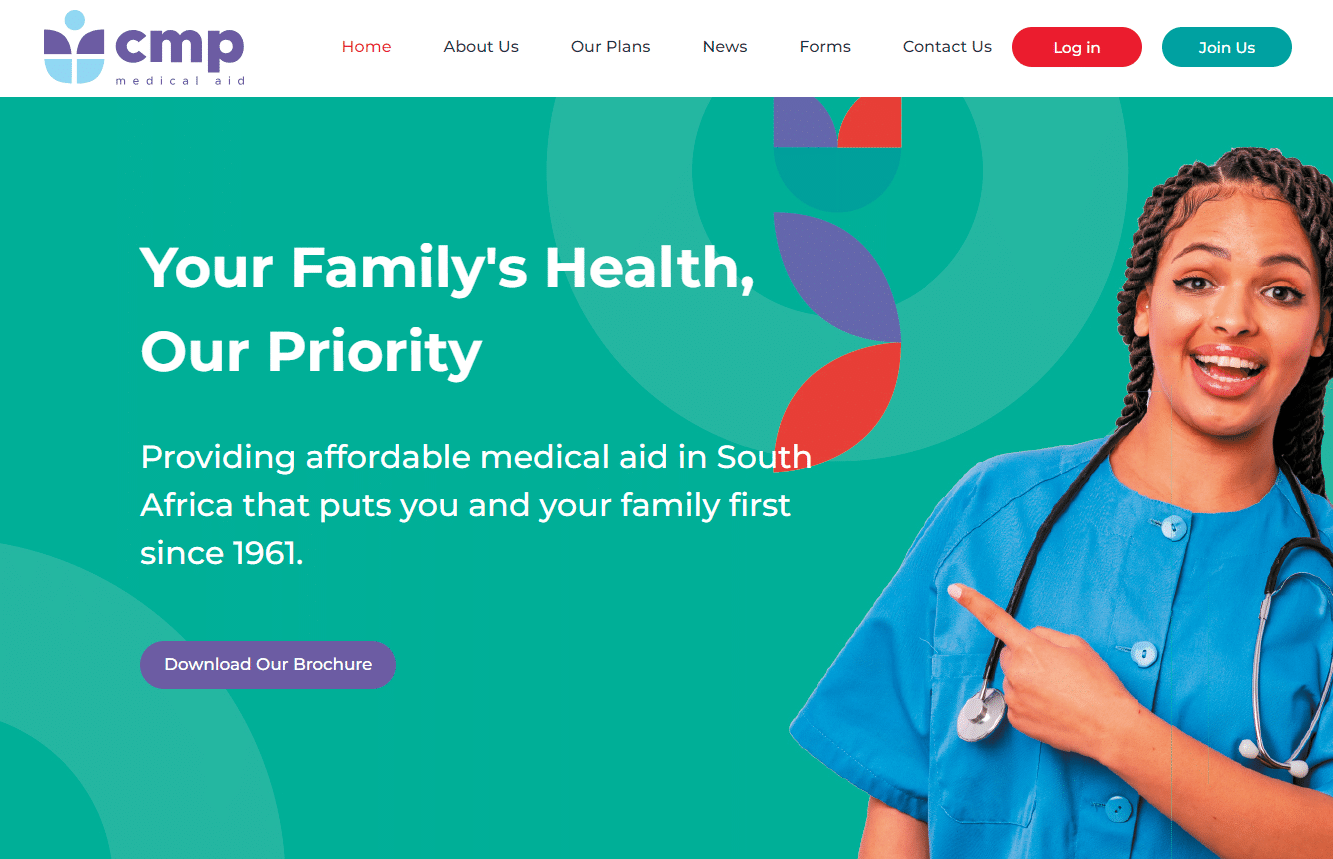
CompCare
CompCare provides healthcare plans that meet diverse needs, encompassing PMB and chronic illness coverage. Their priority is delivering comprehensive health solutions addressing multiple medical concerns.
Meticulously crafted, their plans offer vital support to members with persistent conditions requiring attention.
Does CompCare cover Deep Vein Thrombosis?
Yes, CompCare covers Deep Vein Thrombosis under its PINNACLE plan.
CompCare Plans that Cover Deep Vein Thrombosis
The following CompCare Medical Aid Plans provide benefits and cover for Deep Vein Thrombosis:
- ✅ PINNACLE
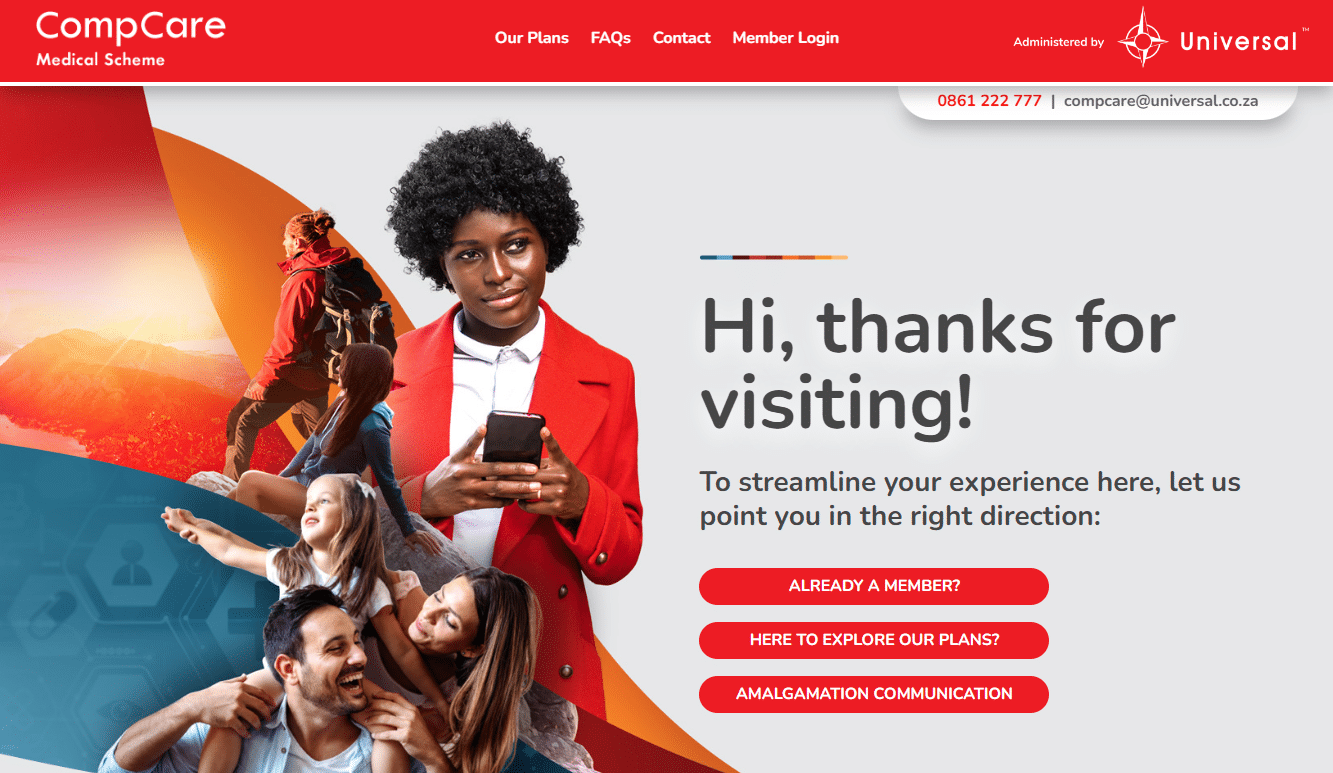
Discovery Health
Discovery Health is universally recognised and praised for its all-inclusive healthcare plans and solutions, which entail vast PMB and chronic ailment coverage. These plans are tailored to offer members full-fledged aid and treatment options that cater to diverse health concerns.
Does Discovery Health cover Deep Vein Thrombosis?
Yes, Discovery Health might cover Deep Vein Thrombosis. According to Discovery Health’s updated Prescribed Minimum Benefits List of Conditions, DVT is not specifically listed, but the scheme might cover hospitalisation, procedures and certain treatments.
Discovery Health Plans that Cover Deep Vein Thrombosis
The following Discovery Health Medical Aid Plans provide benefits and cover for Deep Vein Thrombosis:
- ✅ Discovery Health Executive Plan
- ✅ Discovery Health Classic Comprehensive
- ✅ Discovery Health Classic Core
- ✅ Discovery Health Classic Delta Comprehensive
- ✅ Discovery Health Classic Delta Core
- ✅ Discovery Health Classic Delta Saver
- ✅ Discovery Health Classic Priority
- ✅ Discovery Health Classic Saver
- ✅ Discovery Health Classic Smart Comprehensive
- ✅ Discovery Health Classic Smart
- ✅ Discovery Health Coastal Core
- ✅ Discovery Health Coastal Saver
- ✅ Discovery Health Essential Delta Comprehensive
- ✅ Discovery Health Essential Delta Core
- ✅ Discovery Health Essential Delta Saver
- ✅ Discovery Health Essential Dynamic Smart
- ✅ Discovery Health Essential Priority
- ✅ Discovery Health Essential Saver
- ✅ Discovery Health Essential Smart
- ✅ Discovery Health KeyCare Core
- ✅ Discovery Health KeyCare Plus
- ✅ Discovery Health KeyCare Start
- ✅ Discovery Health KeyCare Start Regional
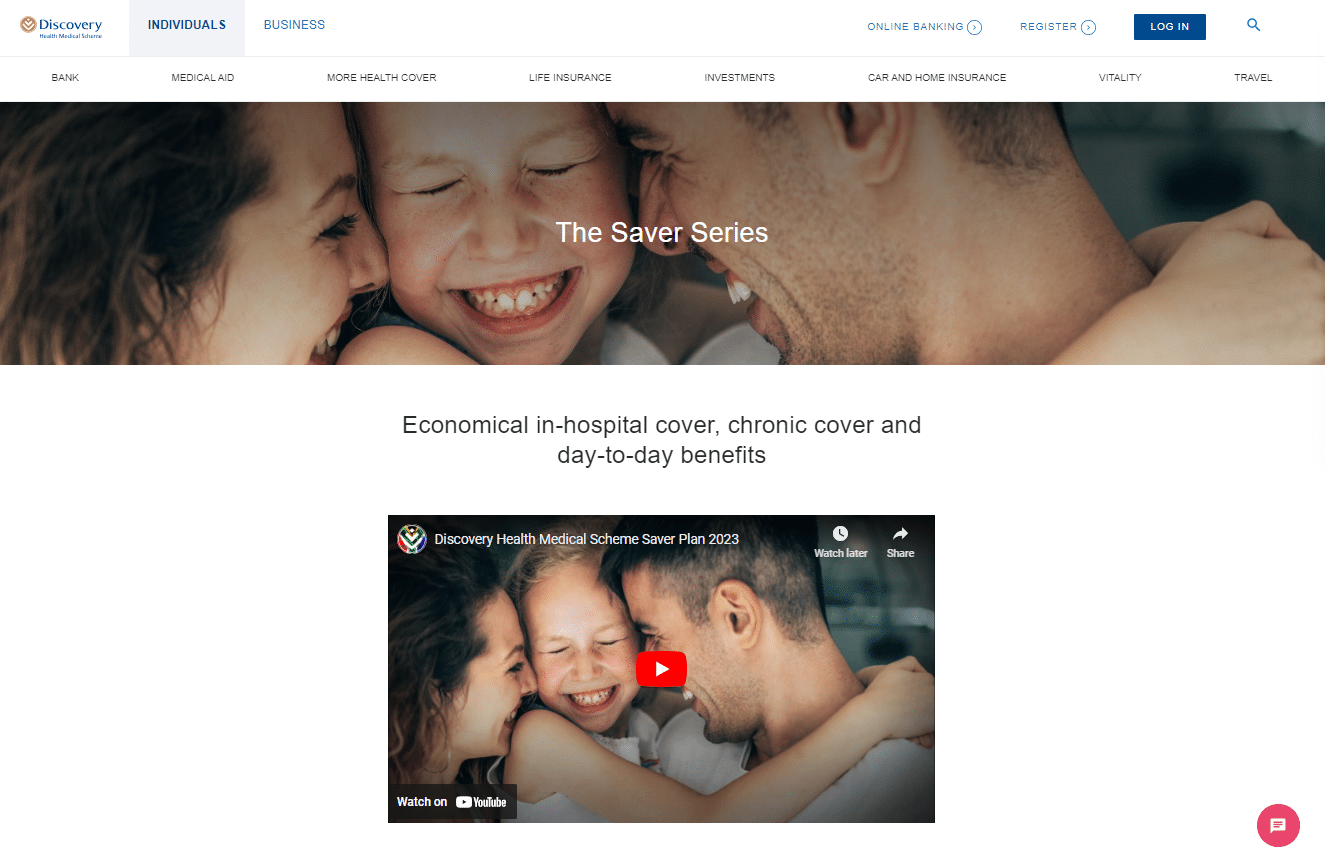
Fedhealth
Fedhealth has designed its healthcare plans to offer generous coverage for chronic diseases and PMBs, ensuring members receive medical attention. These plans come with advantageous features specially crafted to support those dealing with long-term ailments such as DVT.
Does Fedhealth cover Deep Vein Thrombosis?
Yes, Fedhealth covers Deep Vein Thrombosis under its Maxima EXEC and PLUS plans.
Fedhealth Plans that Cover Deep Vein Thrombosis
The following Fedhealth Medical Aid Plans provide benefits and cover for Deep Vein Thrombosis:
- ✅ Maxima EXEC
- ✅ Maxima PLUS
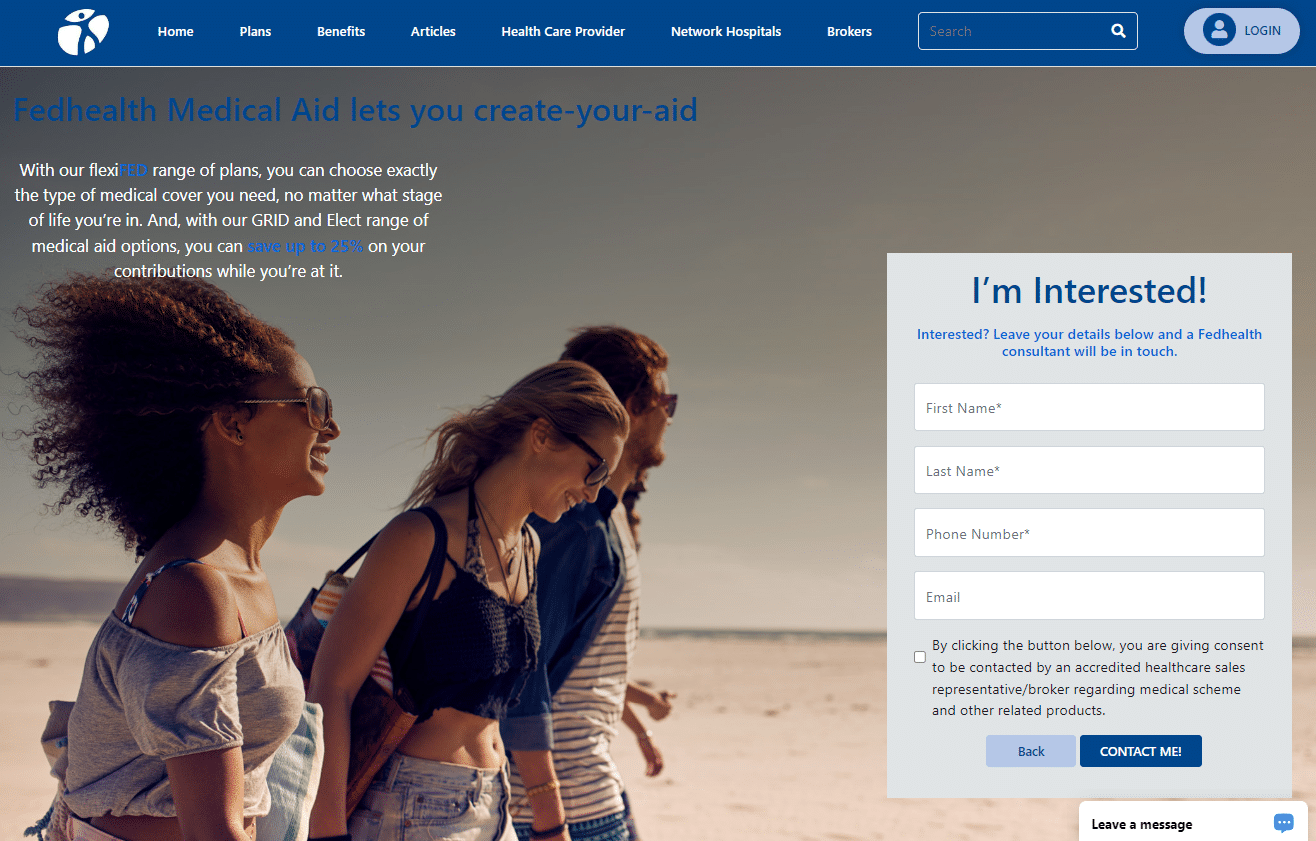
Genesis Medical Scheme
Providing excellent medical solutions to suit the diverse requirements of their clientele, Genesis Medical Scheme concentrates on extending healthcare coverage which encompasses the treatment required by chronic illness and adherence to PMB.
Does Genesis Medical Scheme cover Deep Vein Thrombosis?
Yes, Genesis Medical Scheme might cover Deep Vein Thrombosis. DVT is not specifically listed under the benefits or plan comparison, but members are covered for hospitalisation.
Genesis Medical Scheme Plans that Cover Deep Vein Thrombosis
The following Genesis Medical Aid Plans provide benefits and cover for Deep Vein Thrombosis:
- ✅ MED-100
- ✅ MED-200
- ✅ MED-200 Plus
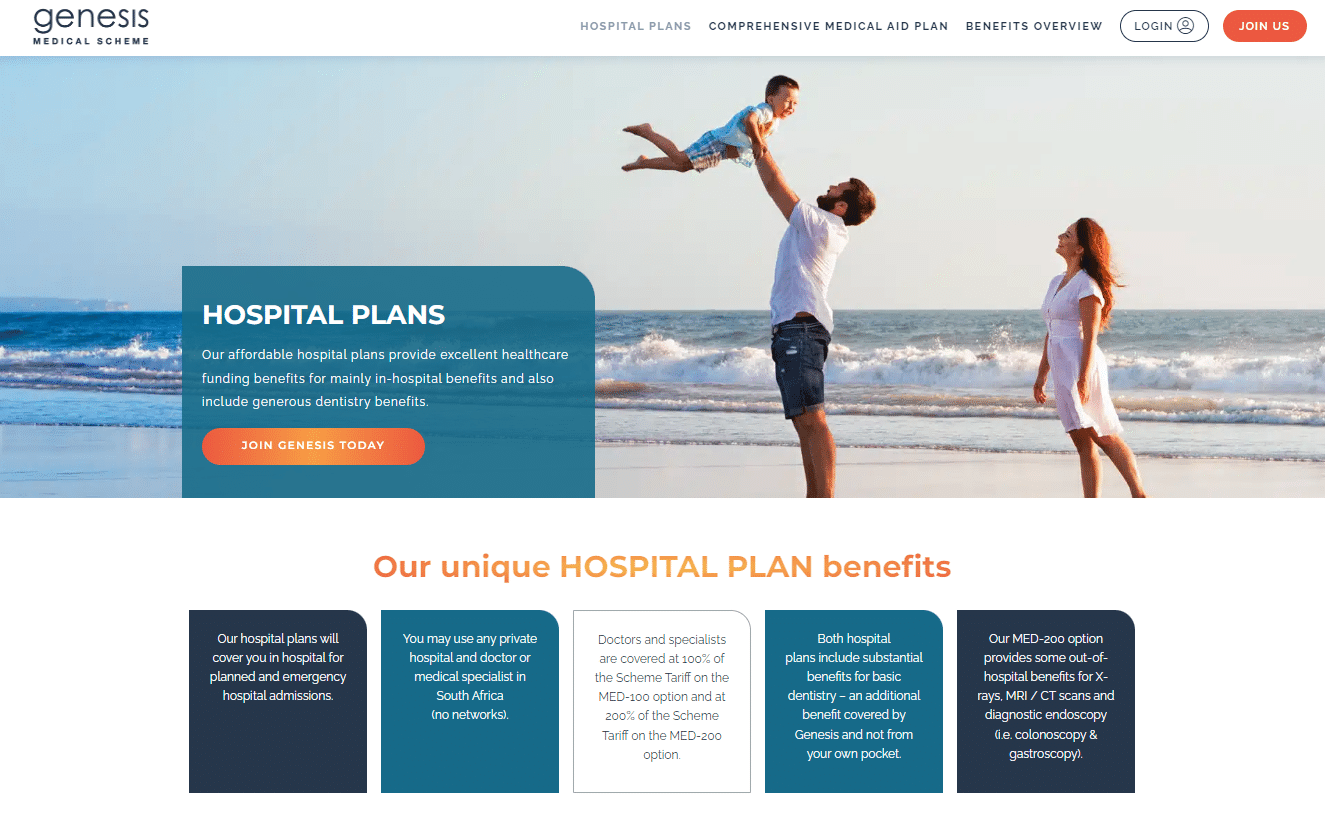
Sizwe Hosmed
Sizwe Hosmed’s comprehensive healthcare plans cover chronic diseases and PMB benefits. Their main objective is to provide vital healthcare solutions for various medical issues while ensuring members can choose a plan that suits their needs and budget.
Does Sizwe Hosmed cover Deep Vein Thrombosis?
Yes, Sizwe Hosmed might cover Deep Vein Thrombosis when members are hospitalised. However, DVT does not appear on any CDL or non-CDL lists published by the scheme.
Sizwe Hosmed Plans that Cover Deep Vein Thrombosis
The following Sizwe Hosmed Medical Aid Plans provide benefits and cover for Deep Vein Thrombosis:
- ✅ Essential Copper
- ✅ Silver Hospital
- ✅ Access Saver-25
- ✅ Access Saver-15
- ✅ Gold Ascend
- ✅ Gold Ascend EDO
- ✅ Value
- ✅ Value Core EDO
- ✅ Platinum Enhanced
- ✅ Platinum Enhanced EDO
- ✅ Plus
- ✅ Titanium Executive

Keyhealth
Keyhealth’s healthcare plans address chronic diseases and PMBs (including DVT), emphasising delivering accessible and high-quality care. Their plans are tailored to their members’ unique medical needs, ensuring comprehensive treatment and support.
Does Keyhealth cover Deep Vein Thrombosis?
Yes, Keyhealth covers Deep Vein Thrombosis according to its hospital-at-home program.
Keyhealth Plans that Cover Deep Vein Thrombosis
The following Keyhealth Medical Aid Plans provide benefits and cover for Deep Vein Thrombosis:
- ✅ Essence
- ✅ Origin
- ✅ Equilibrium
- ✅ Silver
- ✅ Gold
- ✅ Platinum

Makoti Medical Scheme
The Makoti Medical Scheme concentrates on chronic disease management and PMB coverage, presenting cost-effective and extensive healthcare alternatives to members with diverse medical conditions.
Does Makoti Medical Scheme cover Deep Vein Thrombosis?
No, the Makoti Medical Scheme does not directly cover DVT. However, benefits might be available to members in terms of hospitalisation.
Makoti Medical Scheme Plans that Cover Deep Vein Thrombosis
The following Makoti Medical Aid Plans provide benefits and cover for Deep Vein Thrombosis:
- ✅ Primary Option
- ✅ Comprehensive Option

Medihelp
Medihelp offers healthcare plans incorporating extensive coverage for chronic illnesses and adherence to PMB. Their plans are designed to cater to a broad spectrum of medical requirements, rendering crucial aid in effectively dealing with long-term ailments.
Does Medihelp cover Deep Vein Thrombosis?
Yes, Medihelp might cover DVT by offering hospitalisation benefits. However, Medihelp’s brochures do not specifically indicate cover for DVT.
Furthermore, when applying for cover with Medihelp, all members and dependents must declare whether they have been diagnosed with DVT and other blood disorders.
Medihelp Plans that Cover Deep Vein Thrombosis
The following Medihelp Medical Aid Plans provide benefits and cover for Deep Vein Thrombosis:
- ✅ MedElect Student
- ✅ MedVital Elect
- ✅ MedVital
- ✅ MedMove!
- ✅ MedAdd Elect
- ✅ MedAdd
- ✅ MedSave
- ✅ MedElect
- ✅ MedPrime Elect
- ✅ MedPrime
- ✅ MedElite
- ✅ MedPlus
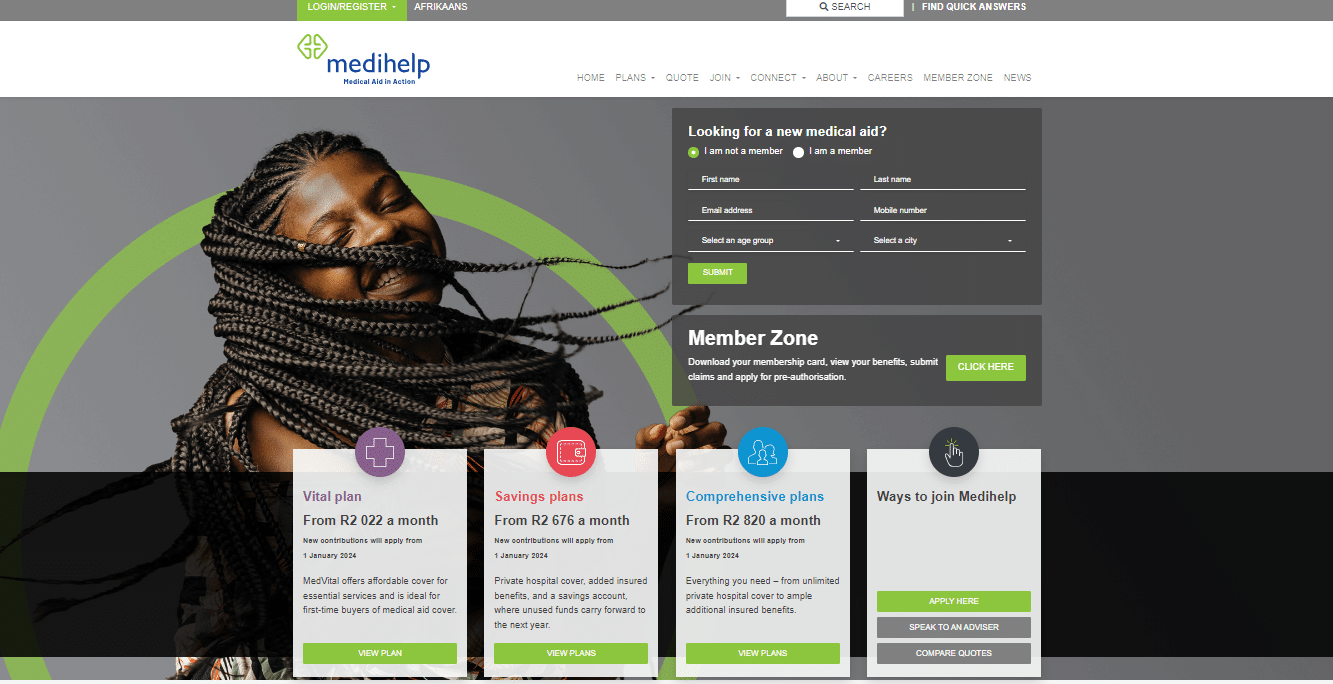
Medimed Medical Scheme
Medimed Medical Scheme offers healthcare services encompassing PMB coverage and managing chronic illnesses effectively.
The prime focus is providing members swift access to vital medical attention and comprehensive support for various health issues.
Does Medimed cover Deep Vein Thrombosis?
Yes, the Medimed Medical Scheme might cover Deep Vein Thrombosis, subject to waiting periods.
Medimed Plans that Cover Deep Vein Thrombosis
The following Medimed Medical Aid Plans provide benefits and cover for Deep Vein Thrombosis:
- ✅ Medisave Essential
- ✅ Alpha
- ✅ Medisave Standard
- ✅ Medisave Max
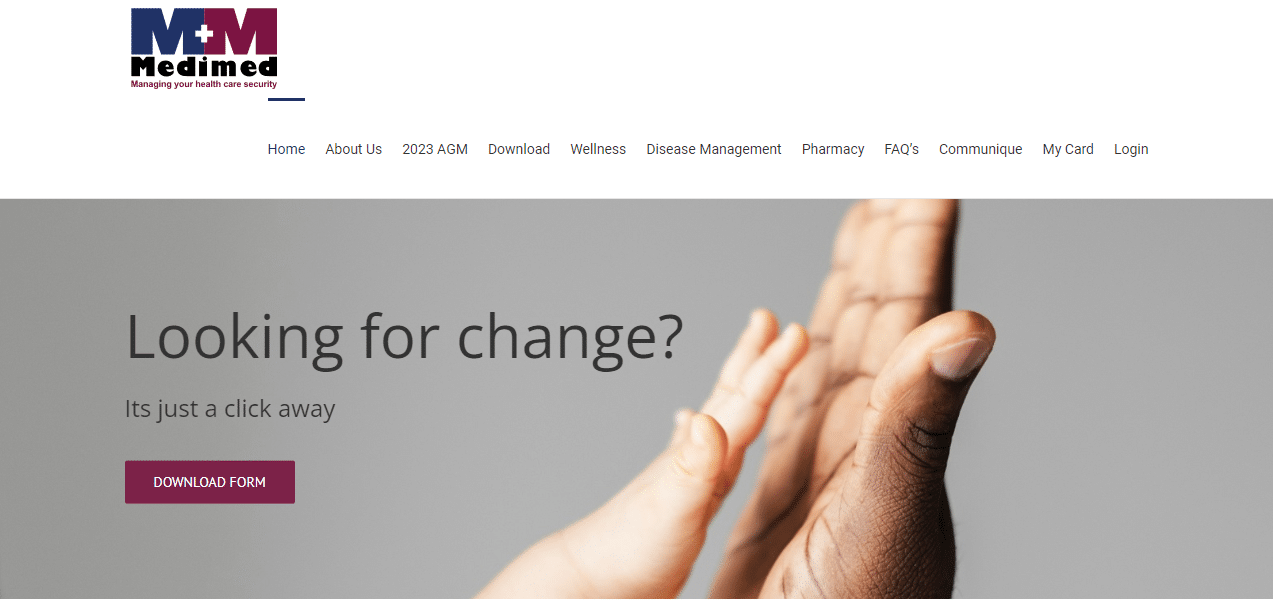
Medshield
Medshield stands at the forefront of healthcare solutions, offering all-encompassing plans covering chronic diseases and providing PMB benefits.
Their primary commitment lies in delivering exceptional healthcare options, ensuring members access to necessary care to manage their chronic conditions.
Does Medshield cover Deep Vein Thrombosis?
Yes, Medshield might cover Deep Vein Thrombosis, subject to waiting periods and other restrictions according to the member’s plan.
Medshield Plans that Cover Deep Vein Thrombosis
The following Medshield Medical Aid Plans provide benefits and cover for Deep Vein Thrombosis:
- ✅ MediCurve
- ✅ MediPhila
- ✅ MediSwift
- ✅ MediValue
- ✅ MediValue Compact
- ✅ MediCore
- ✅ MediPlus Prime
- ✅ MediPlus Compact
- ✅ MediSaver
- ✅ MediBonus
- ✅ PremiumPlus
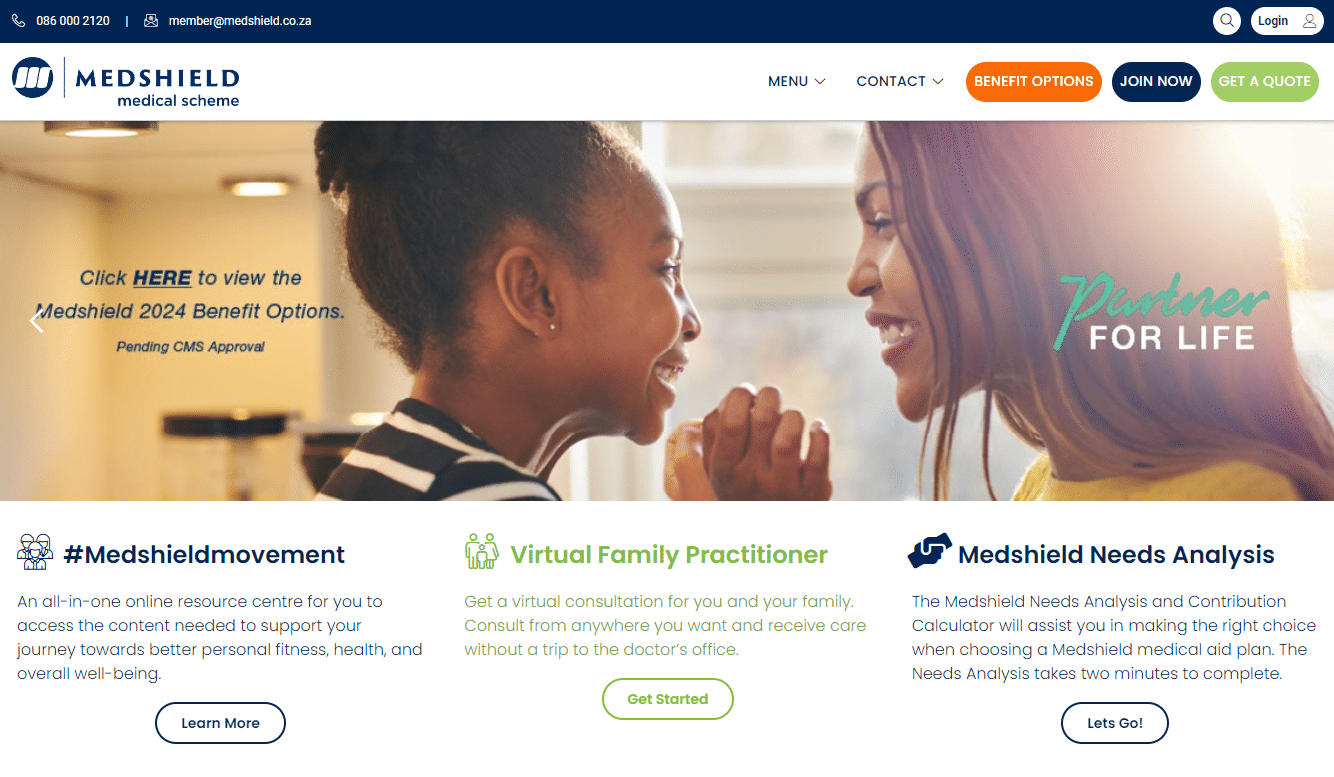
Momentum Health
Momentum Health presents a range of healthcare plans that ensure all-encompassing provisions for PMBs and chronic illnesses. These plans have been established to deliver broadened treatment options and aid members by responding to their diverse medical requirements.
Does Momentum Health cover Deep Vein Thrombosis?
Yes, Momentum Health covers Deep Vein Thrombosis.
Momentum Health Plans that Cover Deep Vein Thrombosis
The following Momentum Health Medical Aid Plans provide benefits and cover for Deep Vein Thrombosis:
- ✅ Ingwe
- ✅ Evolve
- ✅ Custom
- ✅ Incentive
- ✅ Extender
- ✅ Summit
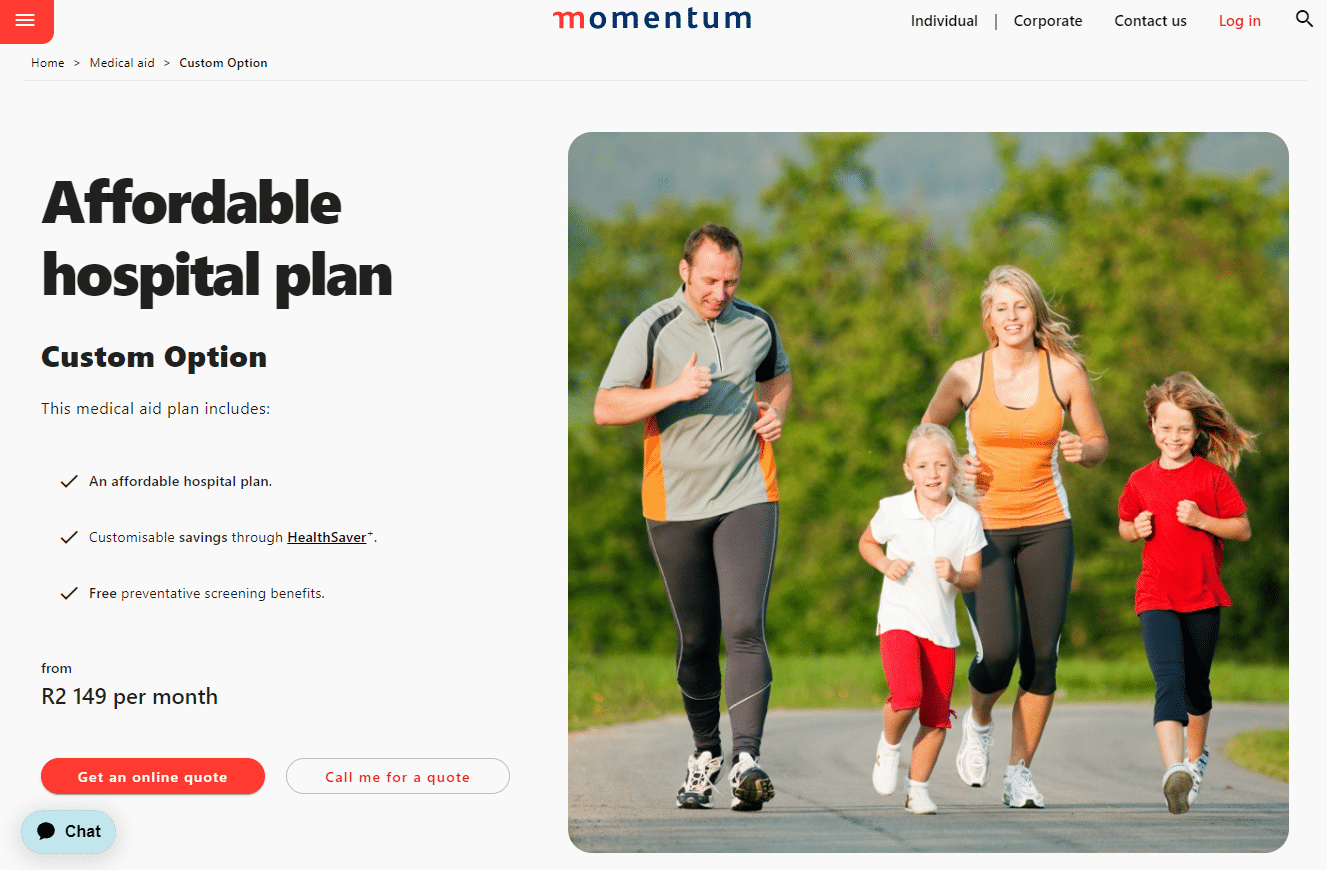
Suremed
Suremed offers healthcare plans that encompass coverage for chronic conditions and compliance with PMBs. Their main objective is to offer easily available healthcare resolutions catering to the requirements of people with diverse medical conditions.
Does Suremed cover Deep Vein Thrombosis?
Yes, Suremed might cover Deep Vein Thrombosis.
Suremed Plans that Cover Deep Vein Thrombosis
The following Suremed Health Medical Aid Plans provide benefits and cover for Deep Vein Thrombosis:
- ✅ Shuttle
- ✅ Explorer
- ✅ Navigator
- ✅ Challenger

Thebemed
The healthcare plans offered by Thebemed prioritise PMB coverage and chronic disease management, aiming to offer all-encompassing solutions for members. Their approach focuses on delivering essential care and support tailored to those battling chronic illnesses.
Does Thebemed cover Deep Vein Thrombosis?
Yes, Thebemed might cover Deep Vein Thrombosis in terms of hospitalisation benefits. However, Thebemed does not specify this in their plan brochures.
Thebemed Plans that Cover Deep Vein Thrombosis
The following Thebemed Health Medical Aid Plans provide benefits and cover for Deep Vein Thrombosis:
- ✅ Universal EDO
- ✅ Universal
- ✅ Energy
- ✅ Fantasy

In Conclusion
This article discusses Deep Vein Thrombosis, a critical subject characterised by the formation of blood clots in the deep vessels of the body, and its consequences for South Africans. We investigate this ailment’s symptoms, treatments, and prevalence within South Africa. Moreover, this analysis will centre on the Medical Aid Schemes in South Africa that provide coverage for deep vein thrombosis (DVT), demonstrating the criticality of such coverage within the country’s healthcare infrastructure.
You might also like: Discovery Health Review
You might also like: Bestmed Review
You might also like: Bonitas Review
You might also like: Medihelp Review
You might also like: Momentum Review
Frequently Asked Questions
What are the early warning signs of DVT?
Early symptoms include extremity discomfort, warmth at the location of pain, swelling around the ankle and lower leg, redness, leg cramps beginning in the calf, and skin discolouration.
What are the dangers of untreated DVT?
Untreated DVT can result in Pulmonary Embolism, which can cause heart attacks, strokes, and significant breathing difficulties.
Are there risk factors for developing DVT?
Yes, there are. Obesity, advanced age, major surgery, cancer, inactivity, pregnancy, trauma, and certain drugs such as oral contraceptives are among the risk factors.
What causes DVT?
Long periods of immobility (for example, long-haul flights), surgery, blood vessel damage, certain medical or genetic conditions, pregnancy, and usage of the contraceptive pill or hormone replacement treatment are all potential causes.
What are some effective treatment methods for DVT?
Treatments include medical-grade compression stockings, anticoagulants (blood thinners), and catheter-directed thrombolysis.
How can DVT be managed at home?
To enhance circulation, take anticoagulant medication, wear compression stockings, elevate legs, and go for brief walks.
What lifestyle changes can help prevent and manage DVT?
Lowering blood pressure and cholesterol through nutrition, stopping smoking, avoiding prolonged sitting, staying hydrated, and wearing compression stockings are examples of lifestyle improvements.

